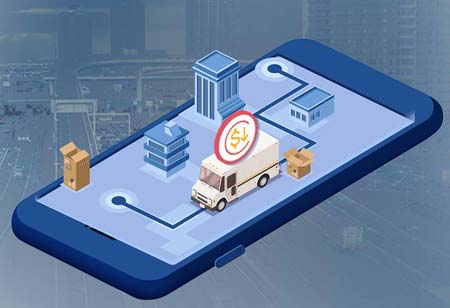THANK YOU FOR SUBSCRIBING
THANK YOU FOR SUBSCRIBING

By
Logistics Transportation Review | Monday, November 21, 2022
Stay ahead of the industry with exclusive feature stories on the top companies, expert insights and the latest news delivered straight to your inbox. Subscribe today.
With API enabling deliberate access to data via automated procedures and eliminating the need for human intervention, shipments are tracked in real-time, enabling increased efficiency in freight forwarding.
FREMONT, CA:A surge in international trade has relatively elevated the value of the global freight market, and thus, nearly 66 million TEU (Twenty Equipment Units) have been forecasted in 2022. Similarly, the value of the market’s size has likely accelerated from USD 6.41 billion and is anticipated to reach 13.19 billion tonnes by 2028 with a steady compound annual growth rate (CAGR) of 2.5 per cent. Moreover, an increased value of goods transported via sea (up to 80 per cent) has escalated the necessity of freight in the global supply chain industry. Wherein, business leaders in the sector are holding intense control of the market—about 85 per cent, on account of technology like API (Application Programming Interface) learning, which is enabling a deliberate shift with digitisation.
API, in general, enables the critical connection of data from various sources to a central decision-making centre by acting as a bridge between various information systems such as respective software, databases, and devices. From a two-way transmission standpoint, it frequently enables organisations to have more consistent and seamless communication. APIs enable organisations to link their applications with their partners effectively and enforce their availability among users over the internet, or often via dedicated mobile applications. As a result, individuals' access to information and functionalities has most likely emerged as a critical and single or simple interface.
On account of the surging demands for real-time visibility on shipment expedition and status, APIs play a crucial role owing to their improvised services like vessel and container tracking. This allows a carrier or forwarder to consistently communicate with transportation companies' APIs and, as a result, request status updates or cargo movements, centralising information and improving customer service.
Furthermore, APIs greatly accelerate developers' access to the information they require, eliminating the increased time consumption associated with starting programmes from scratch. In addition to facilitating the programming process, the tool typically eases the integration of business applications and instigates the deployment of innovative solutions with minimal resources.
With millions of containers, bulk cargoes, and wheeled equipment moving all over the world, many stakeholders from various fields maintain consistent cooperation, as per the shipping cycle. Some of them include shipping lines and vessels’ crews, shipping agencies, freight forwarders, third-party logistics companies, logistics providers, port operators, customs authorities, inland transportation providers, warehouse teams, manufacturers, and often sellers.
Normally, the communication and coordination of the induced variety of operations often harness appropriate tools, where information is typically the anchor of the digital network. As a result, APIs play an important role in gathering comprehensive, up-to-date, and accurate data while minimising the core of human intervention and its side effects.
I agree We use cookies on this website to enhance your user experience. By clicking any link on this page you are giving your consent for us to set cookies. More info





